TMJ Treatment Summerfield
Bringing Your Jaw the Relief It Deserves
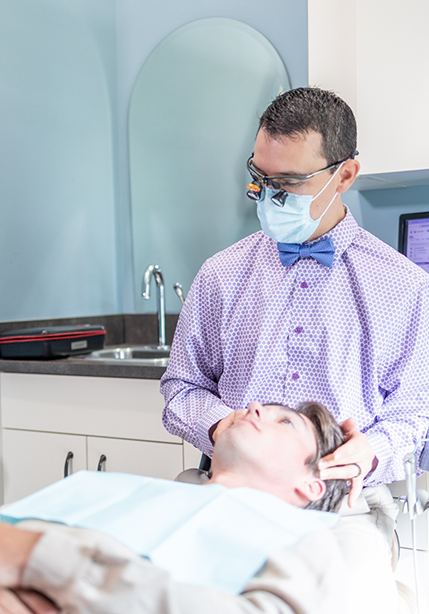
Do you struggle with an aching jaw, frequent headaches, difficulty chewing, and other related symptoms? If so, you may have TMJ disorder. Fortunately, Dr. Parry and our team offer multiple types of TMJ treatment in Summerfield. After we use our advanced diagnostic equipment to learn about your case, we will recommend your next steps on the path to finding long-lasting relief from jaw pain. Contact us today to schedule a consultation with our skilled and empathetic team.
Why Choose Magnolia Shores Dental for TMD/TMJ Treatment?
- Parry is a Local Specialist in TMJ/TMD Treatment
- Advanced Deprogrammer Technology for Optimal Diagnosis
- 3D-Printed Oral Appliances You Can Get in Days, Not Weeks
What Is TMJ Disorder?
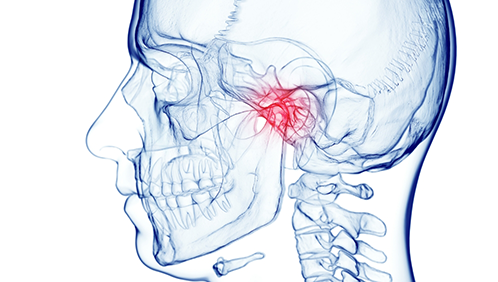
The hinges that connect your jawbone to your skull are called the temporomandibular joint (TMJ). If this joint becomes injured in some way (such as by a sudden impact or if the disks of the joint move out of alignment), the result can be a painful TMJ disorder (TMD) that interferes with daily quality of life. TMD can have numerous causes, such as bruxism, stress, a misaligned bite, and more. In some cases, the cause remains unknown. As a TMJ/TMD specialist, Dr. Parry has all the advanced training needed to help restore your jaw health. To learn more, visit his TMJ/TMD treatment site.
Symptoms of TMJ Disorder

TMD can have dozens of symptoms, the most common of which is jaw pain. It can also cause discomfort in the muscles around the TMJ. Difficulty chewing, a popping sensation in the jaw, and limited mouth movement may also occur. Additional symptoms can affect areas beyond the face and jaw. They can include things like:
- Headaches and migraines
- Neck pain
- Back pain
- Poor posture
- Earaches
Types of TMJ Treatment
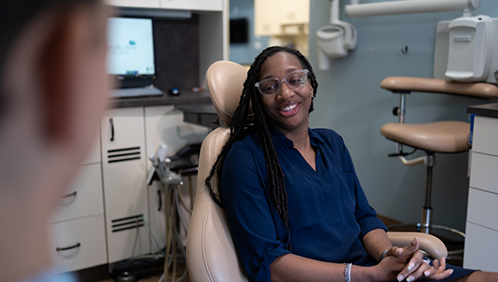
There are a few different ways TMJ disorders can occur, so we’ll need to discuss your symptoms and examine your jaw first to get a better understanding of the situation. In addition to a visual and tactile check, you may require X-rays or other scans that show the state of the bones and other tissues involved in the joint. After your dentist in Summerfield makes a diagnosis, we can begin discussing the various strategies for TMJ treatment, which will vary depending on the underlying cause of the disorder.
Deprogrammer Diagnostics Technology
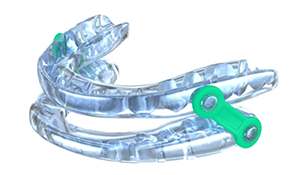
Figuring out the cause of your TMJ disorder and the associated pain is crucial for treatment planning, which is why we use a special device called a deprogrammer. The appliance is designed to be worn at night for a period of two weeks; it gradually realigns the teeth so that we have an idea of what the proper position of your bite looks like. This device might even help you find relief if the source of your pain is the nearby jaw muscles rather than the jaw joint itself.
Occlusal Splint
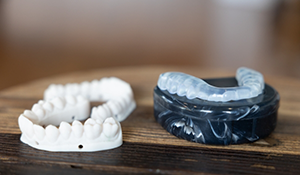
To protect the teeth from grinding while also helping the jaw find a more comfortable resting position, we may recommend an occlusal splint. These special oral devices are uniquely made to fit perfectly over a patient’s teeth. They reposition the jaw into a much more comfortable orientation while also minimizing the contact between the upper and lower teeth. Occlusal splints are normally worn over the long term, but they typically need to be used only at night.
One added benefit of receiving an occlusal splint from our office is how quickly we can deliver a comfortable and correctly fitted device. Traditional TMJ appliances that are created in labs can take 4-6 weeks for a patient to receive, but those crafted in-house only require 24-72 hours, as Dr. Parry customizes and designs them himself. This ensures faster pain relief if you have severe TMJD.
Equilibration/Occlusal Adjustment

When the teeth don’t come together properly, the muscles of your jaw and neck aren’t able to fully relax, which can lead to severe headaches, tooth pain, bruxism (grinding of the teeth at night), and, of course, TMJ disorder. An occlusal adjustment involves modifying the teeth so that there’s even contact throughout the upper and lower arches when your mouth is closed and at rest. This typically means removing a small amount of enamel from specific teeth.
BOTOX® Injections

You probably already know that BOTOX can be used to reduce wrinkles, but you may not realize that it can also help relieve jaw tension. Sometimes, unconscious movements of your jaw can contribute to a TMJ disorder. By administering BOTOX, we can temporarily stop the muscles responsible for such motions from moving, helping the affected areas relax. The procedure is relatively quick and normally takes only about 10 to 30 minutes; it’s also a non-surgical, non-invasive procedure, so you’ll be able to return to your normal activities immediately.
TMJ Treatment FAQs
Can TMJ Be Cured Permanently?
The short answer is yes, but it depends on what kind of therapy you’re using. For example, BOTOX® can help relieve your pain, but the results only last for a certain amount of time. Meanwhile, occlusal splint therapy and occlusal adjustments tend to deliver more permanent results because they directly address the underlying issues that were contributing to your TMJ disorder. We’ll go over the details of the treatments we recommend so that you can set realistic expectations.
Is TMJ Treatment Safe?
Yes, TMJ treatment is considered safe as long as a qualified professional is overseeing the process. We’ll take your overall health into account when putting together your treatment plan, and we’ll always make your safety a top priority, no matter what kind of therapy you need. It’s worth remembering that when it comes to TMJ disorders, the National Institutes of Health normally recommends trying minimally invasive solutions first before resorting to surgical treatments; this is because surgery always carries some degree of risk. That’s why we always begin with more conservative types of TMJ therapy.
How Long Does TMJ Treatment Take?
The answer depends on what treatment you undergo. If you’re given an occlusal splint, you can expect to wear it every night for anywhere between a few weeks to several months before you can enjoy lasting relief. Occlusal adjustments can be completed in just one appointment, and you can normally expect to see symptoms improve shortly afterward. BOTOX® injections take about 30 minutes each, and relief usually comes several days later (although as noted elsewhere on this page, the effects can only be expected to last for a few months at a time).

